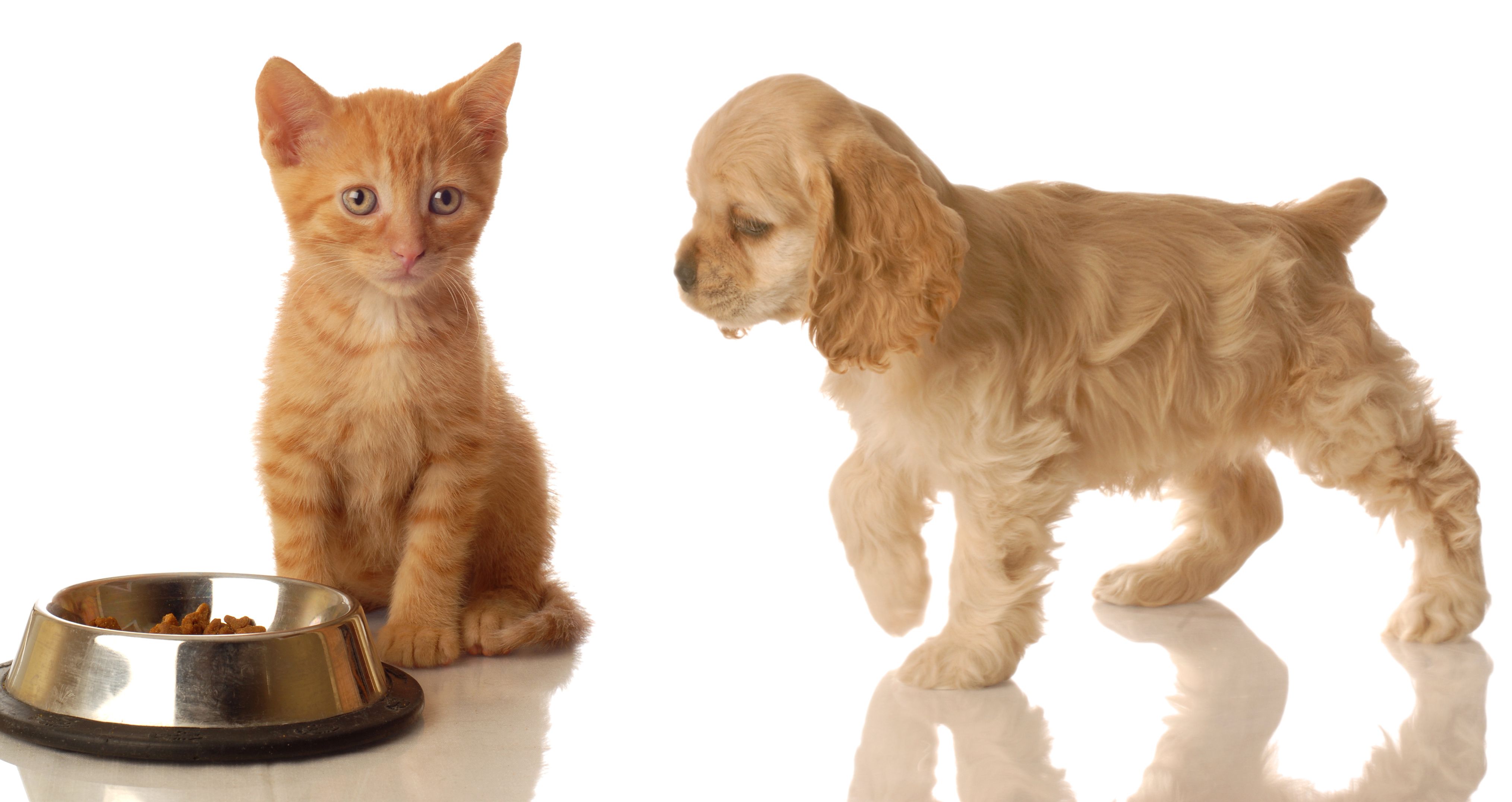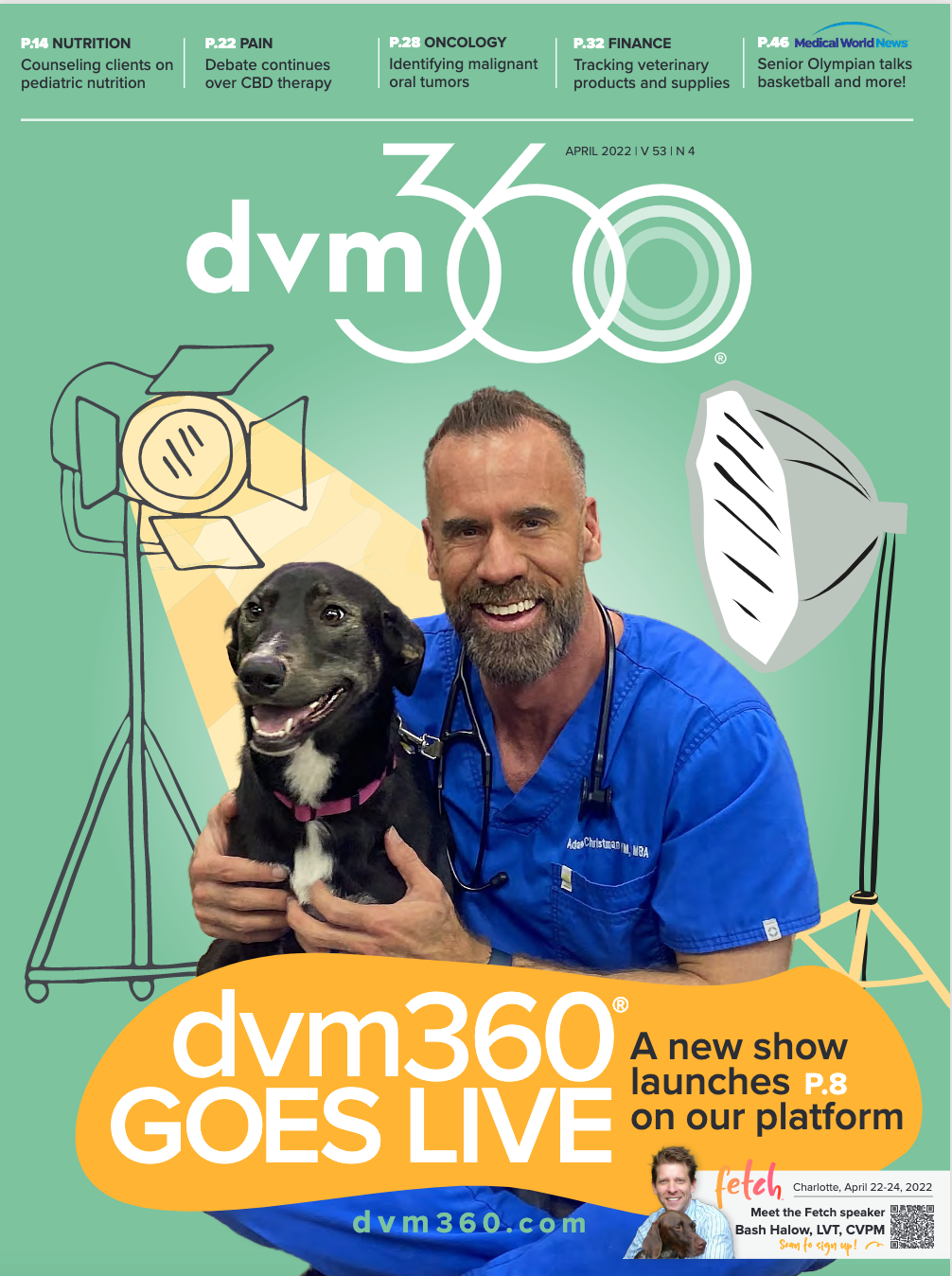Counseling clients on pediatric nutrition
General practice veterinarians and their teams should be comfortable answering 3 common questions about puppy and kitten dietary needs to get these young pets off to a healthy start
Credit: Willee Cole/Adobe Stock

There is a lot to discuss during puppy and kitten visits. One of the key conversations that should happen early and often in a pet’s life between the veterinary team and pet owner is about nutrition. With the amount of misinformation available to pet owners in stores and online, it is essential that veterinarians educate their clients frequently about appropriate nutrition.
“It’s important that veterinarians ensure new owners understand the importance of balanced nutrition throughout their pet’s life, particularly explaining how puppies and kittens have very different nutritional requirements to that of adult pets,” said Jessica Joosse, BAnVetBioSci, RVN, AVN, who is working toward veteri-nary technician specialist status in nutrition. “In the same vein, it’s vital that clients are aware of the damage an inap-propriate diet can cause.”
What follows are 3 common questions we encounter in general practice about puppy and kitten nutrition and how the veterinary team can help guide pet owners in making the best possible decisions.1
WHAT FOOD IS BEST FOR MY PUPPY OR KITTEN?
Puppies and kittens should be fed a diet that is formulated to meet requirements for growth set by the Association of American Feed Control Officials, which is found on the nutritional adequacy statement on the pet food label. Diets formulated for “all life stages” also meet the minimum requirements for growth.1
These diets tend to be more calorically dense than adult maintenance diets and have higher minimum levels of protein and fat. Additionally, minimum levels of some vitamins, minerals, and amino acids are higher. Calcium and phosphorus levels are of particular importance in growing dogs because both excess and insufficient amounts can lead to developmental orthopedic diseases. Growth diets have guidelines for both the total calcium and phosphorus content, as well as the ratio between these 2 nutrients.
Dogs that will reach 50 to 70 lbs or more as adults are considered large- or giant-breed dogs. They will benefit from more specialized growth diets or “large-breed puppy foods,” which are more limited in calories and calcium to promote appropriate growth rates. The nutritional adequacy statement of some growth diets may include an additional claim that they are formulated for growth “including growth of large-size dogs (70 pounds or larger).”2 This additional information will be present in diets for which nutritional claims were verified by the formulation method but not in those that have passed feeding trials.1 Historically, recommendations have been made to feed large-breed dogs adult diets as puppies, but this is no longer an appropriate recommendation due to the nutritional needs of these rapidly growing dogs.
Choosing a pet food can be over-whelming with the number of commercial options available. Veterinary teams can help clients choose an appropriate food by ensuring they know where to find the nutritional adequacy statement on the label. Additionally, the World Small Animal Veterinary Association’s Global Nutrition Committee offers an online nutrition toolkit with guides that can be provided to pet owners, including information on selecting pet foods. It can also be helpful to make specific diet recommendations from trusted brands during patient visits. These recommendations should be consistent from all members of the vet team.2
HOW MUCH SHOULD I FEED?
The answer to this question will vary for every individual pet. Ideal growth rates will change over time and differ based on the pet’s sex and anticipated adult size. Ideally, puppies and kittens should maintain a body condition score of 4 out of 9.2 Evaluating the weight, body condition score, and muscle condition score of all pets at every visit is an important part of maintaining a healthy patient population. Veterinary team members can also show pet owners how to evaluate body condition score in between medical visits.
The risk of excess calories includes creating overweight or obese puppies and kittens that will be prone to orthopedic disease and other health conditions later in life. Additionally, feeding too many calories can accelerate growth rates, which can also lead to orthopedic abnormalities.2
The calorie content of puppy and kitten foods varies greatly between individual products. If a puppy or kitten is becoming too heavy, it is best to reduce the amount fed or switch to a product with a lower caloric density. Pet owners should also be aware of how many calories are coming from treats. Many nutritionists recommend that less than 10% of the daily caloric intake of a pet come from treats. Exceeding this level may unbalance the diet of essential nutrients.
When making specific recommendations on feeding amounts for pet owners, calculating an appropriate caloric intake for the pet based on current body weight, age, and activity is the ideal approach. The Waltham puppy growth charts can also help track development of puppies based on sex and anticipated adult size. Veterinarians can use these tools to easily create customized feeding amounts for each patient.3
WHEN SHOULD I SWITCH TO ADULT FOOD?
Puppies and kittens should be fed a growth diet until they reach at least 80% of their adult size. For cats and small- to medium-breed dogs, this is around 1 year of age. For large- and giant-breed dogs, growth can continue up to 18 to 24 months. If the calorie content is appropriate to maintain lean body condition, it will not be detrimental to a pet to continue a growth or all-life-stage diet past the point of adult size.
Switching to an adult diet simply because of weight concerns is not recommended. These diets may have similar caloric density, especially those if they are formulated for all life stages. Additionally, diets formulated for adult maintenance will not have the appropriate nutrient profile for growing puppies and kittens.
It is important to remember that calorie needs will decrease following spay/neuter. This necessitates an adjustment in the amount of food given to pets. If a pet is spayed or neutered before they reach skeletal maturity, they should remain on a puppy or kitten food that has the nutrients required for growth.
Veterinary teams should be sure to counsel pet owners on when it is appropriate to switch to an adult maintenance diet and offer guidance for adjusting caloric intake following spay and neuter procedures. Consider adding information about dietary adjustments on postoperative instructions after these procedures.
MAKE STRONG RECOMMENDATIONS TO MAXIMIZE HEALTH
Veterinarians and their team members should be comfortable answering general questions about pediatric nutrition and making individual recommendations based on the current nutritional status of the pet in front of them. Ensuring that pet owners are aware of the importance of a growth diet and appropriate feeding amounts for their pet is essential to setting pediatric patients up for a healthy life.
REFERENCES
- Larsen JA. Nutrition and exercise for growing puppies. Veterinary Partner. October 14, 2013. Updated May 16, 2018. Accessed March 18, 2022. https://veterinarypartner.vin.com/default.aspx?pid=19239&id=5985068
- Linder DE. Confused about what to feed your large breed puppy? New rules may help! Cummings Veterinary Medical Center at Tufts University. February 24, 2017. Accessed March 18, 2022. https://vetnutrition.tufts.edu/2017/02/confused-about-what-to-feed-your-large-breed-puppy-new-rules-may-help/
- Waltham puppy growth charts. Waltham Petcare Science Institute. Accessed April 11, 2022. https://www.waltham.com/resources/puppy-growth-charts

Episode 67: Choosing trusted supplements
October 20th 2021In this episode of The Vet Blast Podcast, Dr Adam Christman chats with Dr Janice Huntingford about the latest insights into selecting the best supplements for your patients, including the importance of recommending and utilizing products that have a substantial amount of science and research behind them. (Sponsored by Vetoquinol)
Listen